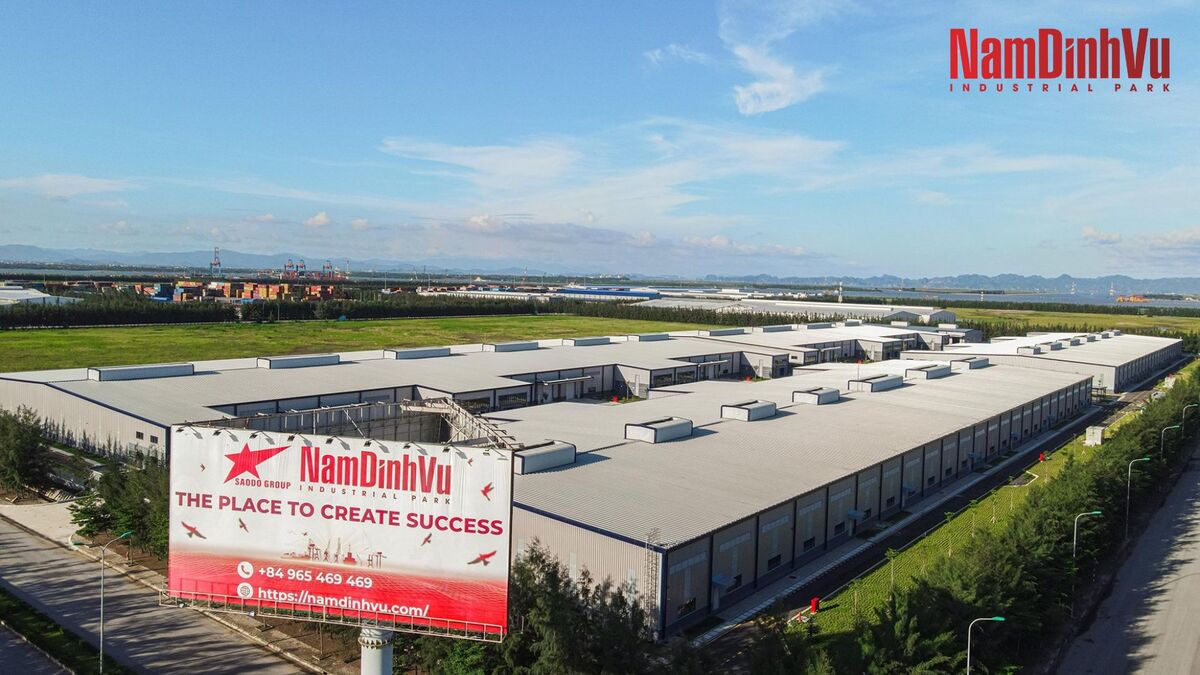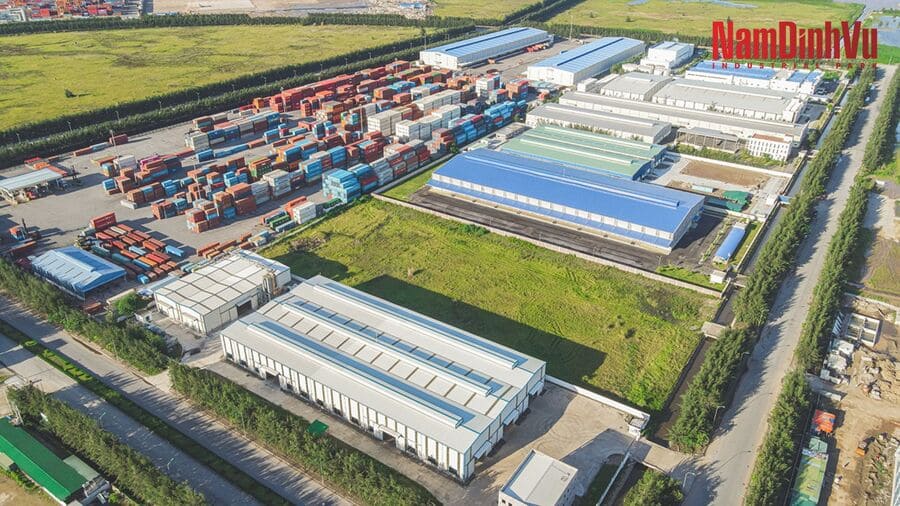Northern Vietnam has emerged as a pivotal hub for industrial development, attracting substantial foreign direct investment (FDI) and offering promising opportunities for growth in 2025. The region’s strategic location, coupled with robust infrastructure and favorable government policies, has positioned it as an attractive destination for multinational corporations (1)
Current Landscape of Industrial Parks in Northern Vietnam(1)
As of the third quarter of 2024, Northern Vietnam’s industrial land area has expanded to approximately 16,700 hectares, marking a 16% increase compared to 2023. This significant growth reflects the region’s rising importance as a manufacturing and logistics hub. The increased availability of industrial land has been met with strong demand, resulting in an overall occupancy rate of 68%. This indicates that while new industrial zones are being developed, the existing spaces are rapidly being filled, highlighting the region’s attractiveness to both domestic and international investors.
The rapid development of industrial parks has also impacted rental prices. As of 2024, the average rental rate for industrial land in Northern Vietnam has risen to $130 per square meter, representing a 5.7% increase from the previous year. This upward trend is particularly evident in key provinces such as Bac Ninh and Hung Yen, where rental prices have surged by 10% due to heightened demand. These provinces, located near major transportation networks and supply chain hubs, have become prime locations for businesses looking to establish or expand their manufacturing facilities. The increasing rental costs indicate strong investor confidence and the growing competitiveness of Northern Vietnam’s industrial real estate market.
With continuous investments in infrastructure, policy support, and supply chain diversification, Northern Vietnam is witnessing unprecedented industrial growth. As companies continue to seek cost-effective production bases, the region’s industrial parks are expected to remain a key driver of economic expansion, positioning Northern Vietnam as one of the most sought-after industrial destinations in Asia.
Notable Industrial Parks and Investments
Northern Vietnam has emerged as a prime destination for international investors, with several industrial parks attracting substantial capital inflows:
- Yen Phong Industrial Park (Bac Ninh): Samsung Display Co. plans to invest an additional $1.8 billion to build an OLED manufacturing facility, bringing its total investment in Bac Ninh to $8.3 billion. (2)
- Bac Giang Province: Shunsin, a subsidiary of Foxconn, is set to invest $80 million in a facility for integrated circuit board production, with full-scale operations expected by December 2026. (3)
- Hai Duong Province: The local Industrial Parks Management Board aims to attract $1 billion in FDI and VND 8.5 trillion ($337.6 million) in domestic investment by 2025, focusing on high-tech industries such as semiconductor manufacturing. (4)
- Hanoi: The capital city expects to attract $768 million in industrial park investments in 2024, with plans to expand industrial zones to accommodate high-tech and environmentally friendly projects. (5)
- Hai Phong – Nam Dinh Vu Industrial Park: Strategically located within the Dinh Vu – Cat Hai Economic Zone, Nam Dinh Vu is a key multi-sector industrial park attracting manufacturing, logistics, and heavy industry investments. As one of Vietnam’s leading FDI hubs, Hai Phong recorded over $1.5 billion in registered investment capital in 2023. (Source: Hai Phong Economic Zone Authority)

Growth Prospects and Opportunities in 2025 (1)
The industrial real estate sector in Northern Vietnam is set for significant growth in 2025, largely driven by ongoing infrastructure development. One of the most transformative projects is the proposed $67 billion high-speed railway connecting Hanoi and Ho Chi Minh City, which is expected to drastically improve logistics and transportation efficiency. By reducing travel times and cutting transportation costs, this project will make Northern Vietnam even more attractive to investors. Additionally, continuous investments in highways, deep-water ports, and industrial clusters will further enhance the region’s connectivity, solidifying its position as a key logistics hub in Southeast Asia. Such developments are crucial for manufacturers looking for cost-effective and well-connected industrial locations.

To further encourage investment, the Vietnamese government is offering various incentives aimed at attracting high-tech and sustainable industries. These policies include corporate income tax reductions, streamlined land acquisition processes, and financial support for green manufacturing initiatives. Such incentives make it easier for businesses to establish operations, particularly in sectors like electronics, renewable energy, and automotive production. The government’s commitment to creating a business-friendly environment has positioned Northern Vietnam as one of the most attractive destinations for foreign direct investment (FDI) in Southeast Asia.
Another critical factor fueling growth is the global shift in supply chain strategies, with multinational corporations actively diversifying their manufacturing bases to reduce dependency on a single market. Northern Vietnam has emerged as a key alternative, thanks to its competitive labor costs, strategic location, and access to major trade agreements like the CPTPP and EVFTA. Companies such as Apple, Samsung, and Foxconn have already expanded their manufacturing footprint in the region, reinforcing its reputation as a global production hub. As businesses continue to seek stable and cost-effective locations, Northern Vietnam is expected to attract even more investment in electronics, textiles, and high-tech industries.
To accommodate this rising demand, Vietnam plans to expand its industrial land by an additional 15,000 hectares in 2025. This expansion is essential in addressing land shortages in high-demand provinces such as Bac Ninh, Hung Yen, and Hai Phong, where industrial zones are nearing full occupancy. The additional land will enable the development of specialized industrial parks tailored for high-tech manufacturing, logistics, and sustainable production. By increasing the availability of industrial space, Vietnam is ensuring that investors have ample opportunities to establish and expand their operations without facing major constraints.
With major infrastructure projects, government-backed incentives, a favorable global supply chain shift, and large-scale industrial land expansion, Northern Vietnam is on track to become one of Asia’s most competitive industrial real estate markets in 2025. The region’s ability to offer cost-efficient, well-connected, and investor-friendly industrial zones makes it an ideal choice for businesses looking to expand their production capacity and strengthen supply chains.
In conclusion, Northern Vietnam’s industrial parks are set to experience robust growth and investment opportunities in 2025. The region’s strategic initiatives, infrastructure enhancements, and favorable investment climate make it an attractive destination for businesses seeking expansion in Southeast Asia.
See Related Articles:
Vietnam Factory Rental Price Analysis: Choosing the Right Factory for Your Business
Warehouse Space for Lease in Vietnam’s Industrial Zones – Everything Businesses Need to Know
Vietnam Real Estate Market Growth Q1/2025: Signs of Recovery Across Key Segments
Vietnam Real Estate Prices for Industrial Park Land Leases (Update in 2025)
Source:
(1). B-Company
(2), (3). Reuters
(4). VNEconomy
(5). Hanoi Times
